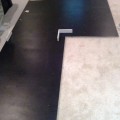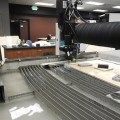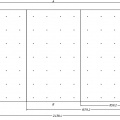Maze solver visualisation in your browser
Came across this visualization for a maze solver.
Came across this visualization for a maze solver.
 Once the panels for the maze floor had dried out, it was time to paint them.
Once the panels for the maze floor had dried out, it was time to paint them.
(more…)
 Now that I had the layout, the next step was to cut and drill the plywood.
Now that I had the layout, the next step was to cut and drill the plywood.
While there are many techniques for doing this, I ended up getting help from a friend who has access to water jet cutters to do this.
 Given standard sizes for plywood, here is a pattern I used to make a maze floor. (more…)
Given standard sizes for plywood, here is a pattern I used to make a maze floor. (more…)
At the Japanese contest, Peter said there is a closed form solution for the maximum number of walls a legal micromouse maze can have. (more…)
 Going through some old notes, I came across reference to the micromouse maze solving methods described some time ago by Adachi in Japan. While these are apparently quite well known in Japan, they are, as far as I can tell, almost completely unknown in the West. At least, I can’t find any description of them in English anywhere on the web. After a lot of hard work with the Google translator and some assistance from Lem Fugitt, I think I have them pieced together…
Going through some old notes, I came across reference to the micromouse maze solving methods described some time ago by Adachi in Japan. While these are apparently quite well known in Japan, they are, as far as I can tell, almost completely unknown in the West. At least, I can’t find any description of them in English anywhere on the web. After a lot of hard work with the Google translator and some assistance from Lem Fugitt, I think I have them pieced together…
 We often tell beginners that they can learn a lot by building a non-contact wall following micromouse. If it can keep track of where it is and knows when it is in the centre of the maze, most of the hard problems have been solved. To get to that stage, you need working sensors, reliable motor control and good information about the maze and the mouse’s position in the maze…
We often tell beginners that they can learn a lot by building a non-contact wall following micromouse. If it can keep track of where it is and knows when it is in the centre of the maze, most of the hard problems have been solved. To get to that stage, you need working sensors, reliable motor control and good information about the maze and the mouse’s position in the maze…